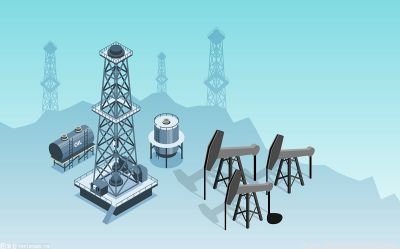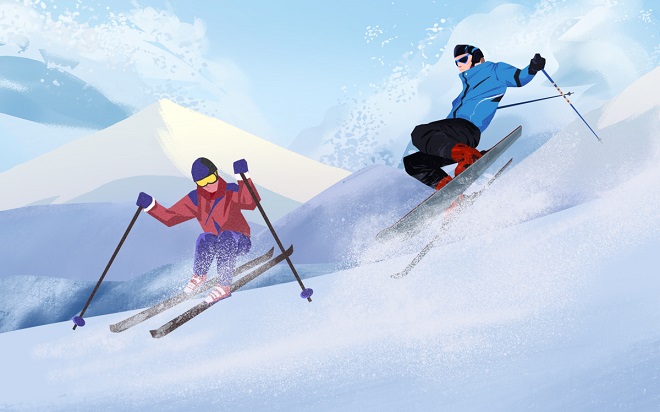AI实战,用Python玩个自动驾驶!
2022-04-12 14:30:33来源:Python专栏
gym是用于开发和比较强化学习算法的工具包,在python中安装gym库和其中子场景都较为简便。
安装gym:
pip install gym
安装自动驾驶模块,这里使用 Edouard Leurent 发布在 github 上的包 highway-env:
pip install --user git+https://github.com/eleurent/highway-env
其中包含6个场景:
高速公路——“highway-v0” 汇入——“merge-v0” 环岛——“roundabout-v0” 泊车——“parking-v0” 十字路口——“intersection-v0” 赛车道——“racetrack-v0”详细文档可以参考这里:
https://highway-env.readthedocs.io/en/latest/
配置环境安装好后即可在代码中进行实验(以高速公路场景为例):
import gymimport highway_env%matplotlib inlineenv = gym.make("highway-v0")env.reset()for _ in range(3): action = env.action_type.actions_indexes["IDLE"] obs, reward, done, info = env.step(action) env.render()运行后会在模拟器中生成如下场景:
env类有很多参数可以配置,具体可以参考原文档。
训练模型1、数据处理(1)state
highway-env包中没有定义传感器,车辆所有的state (observations) 都从底层代码读取,节省了许多前期的工作量。根据文档介绍,state (ovservations) 有三种输出方式:Kinematics,Grayscale Image和Occupancy grid。
Kinematics
输出V*F的矩阵,V代表需要观测的车辆数量(包括ego vehicle本身),F代表需要统计的特征数量。例:
数据生成时会默认归一化,取值范围:[100, 100, 20, 20],也可以设置ego vehicle以外的车辆属性是地图的绝对坐标还是对ego vehicle的相对坐标。
在定义环境时需要对特征的参数进行设定:
config = \ { "observation": { "type": "Kinematics", #选取5辆车进行观察(包括ego vehicle) "vehicles_count": 5, #共7个特征 "features": ["presence", "x", "y", "vx", "vy", "cos_h", "sin_h"], "features_range": { "x": [-100, 100], "y": [-100, 100], "vx": [-20, 20], "vy": [-20, 20] }, "absolute": False, "order": "sorted" }, "simulation_frequency": 8, # [Hz] "policy_frequency": 2, # [Hz] }Grayscale Image
生成一张W*H的灰度图像,W代表图像宽度,H代表图像高度
Occupancy grid
生成一个WHF的三维矩阵,用W*H的表格表示ego vehicle周围的车辆情况,每个格子包含F个特征。
(2) action
highway-env包中的action分为连续和离散两种。连续型action可以直接定义throttle和steering angle的值,离散型包含5个meta actions:
ACTIONS_ALL = { 0: "LANE_LEFT", 1: "IDLE", 2: "LANE_RIGHT", 3: "FASTER", 4: "SLOWER" }(3) reward
highway-env包中除了泊车场景外都采用同一个reward function:
这个function只能在其源码中更改,在外层只能调整权重。
(泊车场景的reward function原文档里有)
2、搭建模型DQN网络,我采用第一种state表示方式——Kinematics进行示范。由于state数据量较小(5辆车*7个特征),可以不考虑使用CNN,直接把二维数据的size[5,7]转成[1,35]即可,模型的输入就是35,输出是离散action数量,共5个。
import torchimport torch.nn as nnfrom torch.autograd import Variableimport torch.nn.functional as Fimport torch.optim as optimimport torchvision.transforms as Tfrom torch import FloatTensor, LongTensor, ByteTensorfrom collections import namedtupleimport random Tensor = FloatTensorEPSILON = 0 # epsilon used for epsilon greedy approachGAMMA = 0.9TARGET_NETWORK_REPLACE_FREQ = 40 # How frequently target netowrk updatesMEMORY_CAPACITY = 100BATCH_SIZE = 80LR = 0.01 # learning rateclass DQNNet(nn.Module): def __init__(self): super(DQNNet,self).__init__() self.linear1 = nn.Linear(35,35) self.linear2 = nn.Linear(35,5) def forward(self,s): s=torch.FloatTensor(s) s = s.view(s.size(0),1,35) s = self.linear1(s) s = self.linear2(s) return s class DQN(object): def __init__(self): self.net,self.target_net = DQNNet(),DQNNet() self.learn_step_counter = 0 self.memory = [] self.position = 0 self.capacity = MEMORY_CAPACITY self.optimizer = torch.optim.Adam(self.net.parameters(), lr=LR) self.loss_func = nn.MSELoss() def choose_action(self,s,e): x=np.expand_dims(s, axis=0) if np.random.uniform() < 1-e: actions_value = self.net.forward(x) action = torch.max(actions_value,-1)[1].data.numpy() action = action.max() else: action = np.random.randint(0, 5) return action def push_memory(self, s, a, r, s_): if len(self.memory) < self.capacity: self.memory.append(None) self.memory[self.position] = Transition(torch.unsqueeze(torch.FloatTensor(s), 0),torch.unsqueeze(torch.FloatTensor(s_), 0),\ torch.from_numpy(np.array([a])),torch.from_numpy(np.array([r],dtype="float32")))# self.position = (self.position + 1) % self.capacity def get_sample(self,batch_size): sample = random.sample(self.memory,batch_size) return sample def learn(self): if self.learn_step_counter % TARGET_NETWORK_REPLACE_FREQ == 0: self.target_net.load_state_dict(self.net.state_dict()) self.learn_step_counter += 1 transitions = self.get_sample(BATCH_SIZE) batch = Transition(*zip(*transitions)) b_s = Variable(torch.cat(batch.state)) b_s_ = Variable(torch.cat(batch.next_state)) b_a = Variable(torch.cat(batch.action)) b_r = Variable(torch.cat(batch.reward)) q_eval = self.net.forward(b_s).squeeze(1).gather(1,b_a.unsqueeze(1).to(torch.int64)) q_next = self.target_net.forward(b_s_).detach() # q_target = b_r + GAMMA * q_next.squeeze(1).max(1)[0].view(BATCH_SIZE, 1).t() loss = self.loss_func(q_eval, q_target.t()) self.optimizer.zero_grad() # reset the gradient to zero loss.backward() self.optimizer.step() # execute back propagation for one step return lossTransition = namedtuple("Transition",("state", "next_state","action", "reward"))3、运行结果各个部分都完成之后就可以组合在一起训练模型了,流程和用CARLA差不多,就不细说了。
初始化环境(DQN的类加进去就行了):
import gymimport highway_envfrom matplotlib import pyplot as pltimport numpy as npimport timeconfig = \ { "observation": { "type": "Kinematics", "vehicles_count": 5, "features": ["presence", "x", "y", "vx", "vy", "cos_h", "sin_h"], "features_range": { "x": [-100, 100], "y": [-100, 100], "vx": [-20, 20], "vy": [-20, 20] }, "absolute": False, "order": "sorted" }, "simulation_frequency": 8, # [Hz] "policy_frequency": 2, # [Hz] }env = gym.make("highway-v0")env.configure(config)训练模型:
dqn=DQN()count=0reward=[]avg_reward=0all_reward=[]time_=[]all_time=[]collision_his=[]all_collision=[]while True: done = False start_time=time.time() s = env.reset() while not done: e = np.exp(-count/300) #随机选择action的概率,随着训练次数增多逐渐降低 a = dqn.choose_action(s,e) s_, r, done, info = env.step(a) env.render() dqn.push_memory(s, a, r, s_) if ((dqn.position !=0)&(dqn.position % 99==0)): loss_=dqn.learn() count+=1 print("trained times:",count) if (count%40==0): avg_reward=np.mean(reward) avg_time=np.mean(time_) collision_rate=np.mean(collision_his) all_reward.append(avg_reward) all_time.append(avg_time) all_collision.append(collision_rate) plt.plot(all_reward) plt.show() plt.plot(all_time) plt.show() plt.plot(all_collision) plt.show() reward=[] time_=[] collision_his=[] s = s_ reward.append(r) end_time=time.time() episode_time=end_time-start_time time_.append(episode_time) is_collision=1 if info["crashed"]==True else 0 collision_his.append(is_collision)我在代码中添加了一些画图的函数,在运行过程中就可以掌握一些关键的指标,每训练40次统计一次平均值。
平均碰撞发生率:
epoch平均时长(s):
平均reward:
可以看出平均碰撞发生率会随训练次数增多逐渐降低,每个epoch持续的时间会逐渐延长(如果发生碰撞epoch会立刻结束)
总结相比于模拟器CARLA,highway-env环境包明显更加抽象化,用类似游戏的表示方式,使得算法可以在一个理想的虚拟环境中得到训练,而不用考虑数据获取方式、传感器精度、运算时长等现实问题。对于端到端的算法设计和测试非常友好,但从自动控制的角度来看,可以入手的方面较少,研究起来不太灵活。


















